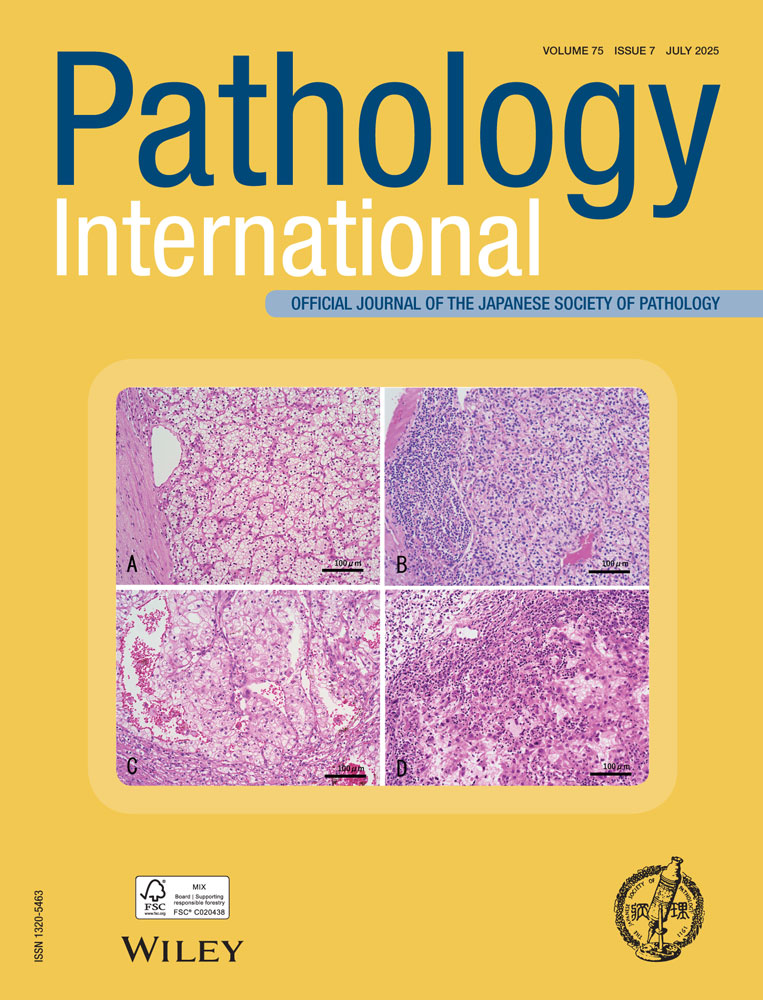Esophageal basaloid carcinoma with marked myoepithelial differentiation
Abstract
A case of esophageal basaloid carcinoma with marked myoepithelial differentiation in a 60-year-old man is reported. The tumor arose as an exophytic mass, measuring 65 × 60 mm, in the middle thoracic esophagus. Approximately two-thirds of the tumor surface was covered with non-cancerous esophageal epithelium. The depth of tumor invasion was limited to the submucosal layer. Histologically, about 70% of the tumor contained a typical basaloid carcinoma component and about 30% contained glandular and intercalated duct-like components with distinct epithelial and myoepithelial differentiation. The tumor presented no component of distinct squamous cell carcinoma, but a small portion of cribriform-like structure, which is typical of adenoid cystic carcinoma, was visible. The inner epithelium composing the intercalated duct-like structure showed immunohistochemical positivity for cytokeratin 14, and the outer epithelium lining adjacent to the stroma showed positivity for α-smooth muscle actin. These findings supported epithelial/myoepithelial differentiation. To our knowledge, our case is the first patient with an esophageal basaloid carcinoma showing marked myoepithelial differentiation.




